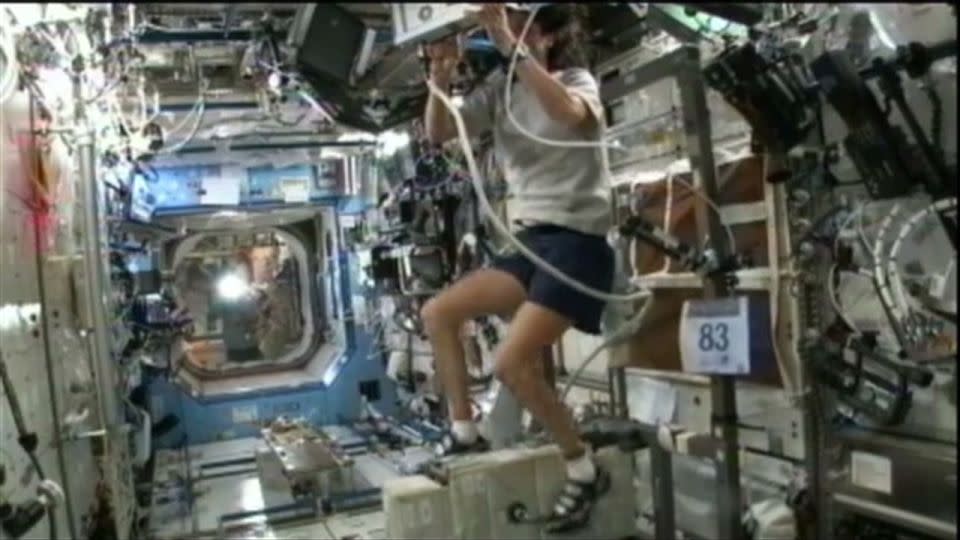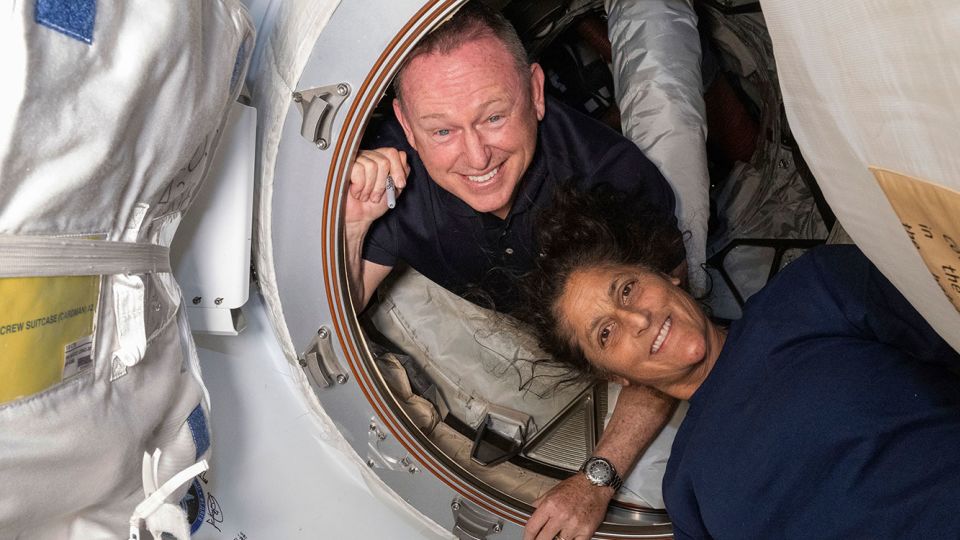Sign up for CNN’s Wonder Theory science newsletter. Explore the universe with news on fascinating discoveries, scientific advancements and more.
When astronauts Suni Williams and Butch Wilmore left Earth for International Space Station nearly three months ago, they ditched their bags for a key piece of equipment. Helming the inaugural crewed flight test of Boeing’s Starliner spacecraft, they departed without their own toiletries and other personal comforts — expecting to return to Earth within a week or so.
They’ve now been on the space station more than 11 weeks, however, and NASA announced Saturday that they would remain there through early 2025. Uncertainty around issues with their Starliner capsule has prompted the space agency to tap SpaceX to step in and return the astronauts on a Crew Dragon capsule instead.
So what exactly would Williams and Wilmore do for another five or six months in space?
Currently the two are guests. They’re not part of Expedition 71, the international crew of seven astronauts serving as the space station’s official staff. Nevertheless, NASA has said they’ve seamlessly integrated with the group, picking up everyday tasks aboard the orbiting laboratory.
But now, Williams and Wilmore are expected to transition into full-time expedition crew members — joining SpaceX’s Crew-9 astronauts, who are slated to launch on their mission as soon as September 24.
As part of Crew-9 and the formal expedition, Williams and Wilmore will take up typical crew tasks, such as conducting spacewalks outside the space station, maintaining the orbiting laboratory and carrying out a tight schedule of science experiments.
And NASA previously confirmed the Starliner astronauts are prepared to make such a shift.
“A couple years ago, we made the decision — knowing that this was a test flight — to make sure that we had the right resources, supplies and training for the crew, just in case they needed to be on ISS, for whatever reason, for a longer period of time,” said Dana Weigel, NASA’s manager of the International Space Station Program, during an August 7 briefing.
“Butch and Suni are fully trained,” Weigel added. “They’re capable and current with EVA (spacewalks), with robotics, with all the things we need them to do.”
Joining Crew-9
SpaceX’s Crew-9 is a routine trip to the space station to replenish expedition staff. The mission had been slated to fly with four astronauts.
Under NASA’s new plan, however, two of those astronauts won’t make the journey. The Crew Dragon spacecraft will instead launch on its outbound flight with only two people aboard.
Ballast, or hunks of metal that serve as dead weight, will fly alongside the two empty seats on Crew-9 to maintain the Crew Dragon’s center of gravity, the space agency said during an early August news conference when explaining the contingency plan.
The two Crew-9 astronauts will then join Williams and Wilmore aboard the space station, and all four would round out the cast of Expedition 72, which will additionally include Russian cosmonauts and is expected to begin in September after a handover period.
As is typical for routine missions to the space station, the Crew-9 astronauts will stay on board for roughly five or six months — leaving Williams and Wilmore in space for another half year in addition to the nearly three months they’ve already spent in space.
Once part of Crew-9, they’ll fall into a structured routine, with their days mostly mapped out hour by hour.
Olympics in orbit
Already, the astronauts have fallen into some of that day-to-day labor. Recent updates from NASA said Williams and Wilmore have used their time so far for space station upkeep, inspecting hardware, organizing cargo, performing checks on Starliner, and assisting with science experiments and tech demonstrations.
On Friday, for example, Wilmore helped configure a new airlock, built by US-based company Nanoracks, that will serve as a new doorway to help deploy satellites, experiments and other equipment.
Williams and Wilmore, however, have also had opportunities for some fun in microgravity. NASA shared footage of the astronauts on July 26 as they passed around a plastic torch on the space station and mimicked Olympic events, including discus and pommel horse. (Working out is a key task for astronauts to avoid losing too much muscle and bone density while in space.)
Williams, for the record, has already proven her chops as a standout space athlete.
In 2012, during an earlier trip to the International Space Station, she became the first person to finish a triathlon in space. Williams used a stationary bike, simulated swimming with a weightlifting machine and ran on a treadmill while strapped in by a harness so she wouldn’t float away.

That feat came after she ran along with the Boston Marathon from the space station in 2007.
Williams and Wilmore logged a combined total of 500 days in space before launching on the Starliner test flight. Williams even said that she cried after she left the space station following her last mission in 2012, unsure if she would ever return.
“This flight is a dream for her,” one NASA commentator said during a June 5 livestream of the Starliner launch.
Extended stays in space
It’s not uncommon for astronauts to unexpectedly extend their stay aboard the space station — for days, weeks or even months.
NASA astronaut Frank Rubio, for example, was slated to spend about six months aboard the International Space Station for his inaugural trip to low-Earth orbit that kicked off in September 2022. He instead logged 371 days in space following the discovery of a coolant leak coming from his original ride — a Russian Soyuz capsule — while docked to the orbiting outpost.
Rubio’s yearlong stay ended up setting a US record for the most continuous days spent in orbit.
Astronauts also routinely extend their stays on the station for days or weeks at a time for a variety of factors, including poor weather on Earth or other schedule adjustments.
Without a suitcase
Flying to the space station without the suitcases they had packed perhaps complicated the comfort of the Starliner astronauts’ extended stay. NASA opted to take their luggage off the spacecraft to make room for a much-needed pump to fix a malfunctioning toilet aboard the space station.
The two astronauts may have finally received a reprieve after a Northrop Grumman cargo resupply mission arrived at the space station earlier this month.
“We do like to keep our options open so we do have some items such as clothes … some personal food items for (Williams and Wilmore), things like that,” said Bill Spetch, NASA’s operations integration manager for the International Space Station Program, during a news briefing.
And there’s no indication that food supplies are dwindling anytime soon. Packed along the Northrop Grumman ship’s 8,200 pounds of science experiments and cargo was a food haul that included meals and produce such as squash, radishes, carrots, blueberries, oranges, apples and coffee, according to Spetch.
Weigel also said Saturday that the space agency tends to keep about four months of food and water reserves on board the space station. And the Northrop Grumman resupply trip helped replenish those reserves, leaving plenty of extra food on board for the ISS crew.
“No one has had to go on a diet or calorie restriction,” Weigel said.
Still, NASA said it needed to make a quick decision about how Williams and Wilmore would return to Earch because the space station’s stores of food and other resources are not unlimited.
“While they’re up there, we have extra crew, we have extra hands, and they can do a lot more work. But they’re also using up more consumables, more supplies,” said Ken Bowersox, NASA’s associate administrator for the Space Operations Mission Directorate, earlier this month.
“We need to bring those folks home and get back to a normal crew size on the ISS,” Bowersox added.
For more CNN news and newsletters create an account at CNN.com
